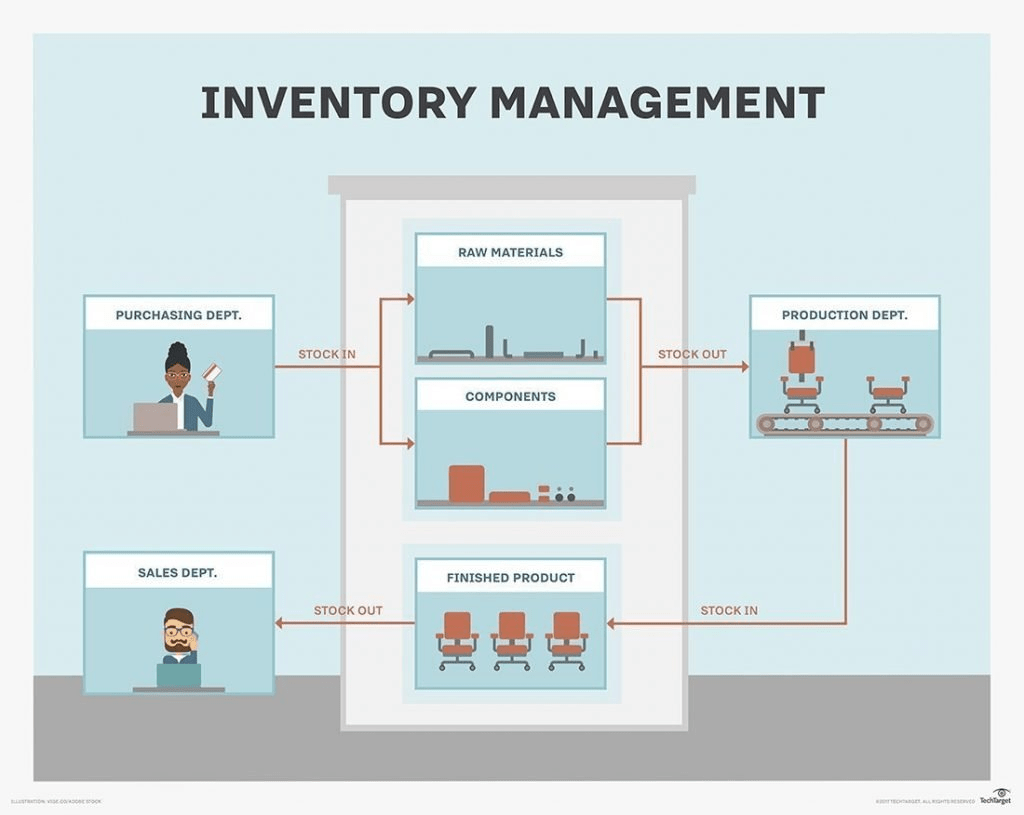Inventory management handles your entire purchasing of raw materials and ordering them from time to time. Using a better inventory system brings greater transparency and reduces errors during stock and returns. Inventory management software delivers seamlessly accurate, transparent, and efficient business experiences for all niches. Inventory management software immediately notices supply shortages and fulfills customer demands on time. The stock should not be exceeding the requirements, nor should it be scarce in quantity.
Inventory management is an integral part of the supply chain cycle. Integrating your inventory system provides greater visibility and clarity in the ordering and fulfillment of stock in an organization. In the end, the entire working mechanism of an organization depends on its inventory.
Every organization needs good inventory management software for healthy inventory activities. Inventory management software won’t work unless integrated with the back-office systems. It requires a strong linkage with its backend systems as well.
What is an Inventory System?

This article explains some of the primary reasons for integrating inventory management software in today’s IT firms. Below are the listed advantages of using an integrated inventory management system.
1. Avoids major stock wastage
When you optimize your inventory, it eventually affects customer satisfaction. It avoids wastage of goods and items—handling of such tremendous inventories results in high storage and handling costs to the company. Therefore, storing more items in inventory reduces the extra space and leads to damaged or obsolete items among the extensive list. On the other hand, if there is a shortage of things, it will lead to missed sales, eventually leading to disappointed customers. Using an integrated inventory management system increases the data accuracy analysis and provides valuable insights into sales forecasting and profitability. An integrated approach will help you generate real-time visibility of available stocks currently in demand.
2. Brings Automation
Merging two systems into one platform streamlines processes with real-time solutions with data available in the businesses. Any organization can make informed decisions based on the output generated by the integrated software. It can also generate efficient and accurate financial reports derived from the precise integration of inventory systems with backend tools. Using such softwares can reduce human errors through manual entries and free staff from tedious, repetitive tasks.
3. Reduce Labor Costs
Labor costs cause heavy expenditure upon the businesses. It holds the maximum percentage among the list of expenses analysis. When you use an integrated system, it cuts down unnecessary labor-intensive manual feeding of components, thereby saving ample amounts of time and money.
4. Generating Accurate Financial Reports
Every business needs to keep an appropriate track of financial statements and accounting data to avoid discrepancies and redundancy. Generating an accurate financial report is necessary for almost all stakeholders and investors to file tax returns. Whenever your system integrates with other accounting software, it helps you reduce mistakes and complications. It can help you tally with the exact precise cross-checking with the backend accounting system.
5. Simple Reconciliation of Data
Keeping track of your inventory is one of the most challenging and complex steps in supply chain management. It entirely depends upon the rise and fall of goods or items’ demand in the market. Whenever any sales or purchases orders increase through customer demand, keeping on-hand stock and items movement at balance becomes challenging. Integrating your system with accounting software creates data reconciliation, which plays a significant role in all business transactions.
6. Provide Clear Visibility to Supply Chain Partners
When your business involves dealing with many supply chain partners, it must ensure maximum productivity while delivering products to consumers. The best solution is to integrate inventory management along with accounting software. When partners can interact with inventory level management, they can easily manage customer shipments.
Conclusion:
Deciding upon the right inventory management software depends on your today’s requirements and the goals for future growth. Integrating inventory management should be done in real-time with flexible and scalable environments for better results. Using an integrated inventory management system gives a competitive edge to your business while minimizing the risk factor to negligible, saving money, and automating the process.
Author Bio:
Jason is a writer passionate about Technology, Business, and the evolving relationship between the two. He often tries to bring intriguing perspectives to otherwise familiar ideas, striving to help his audience reimagine the ever-changing tech landscape.



